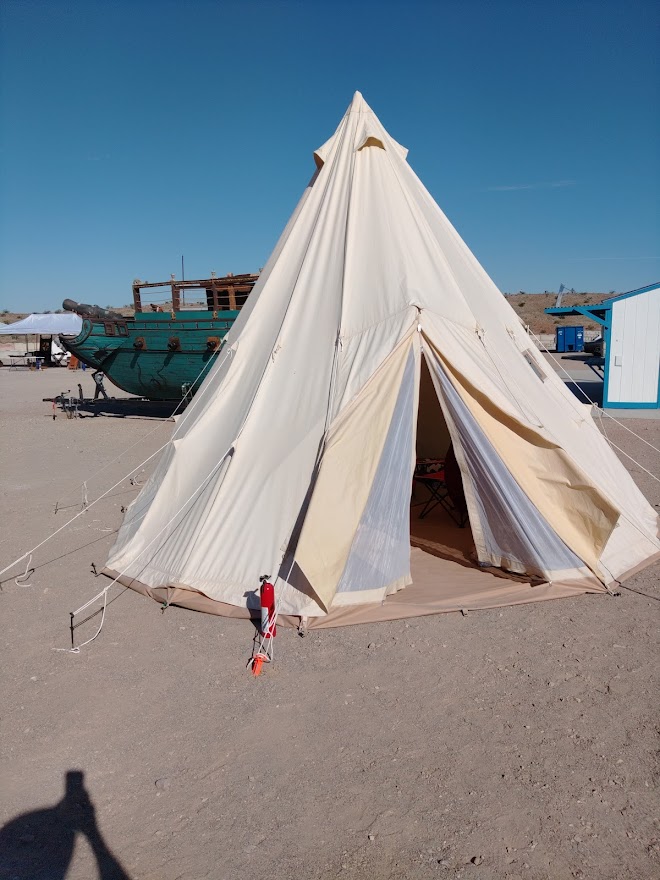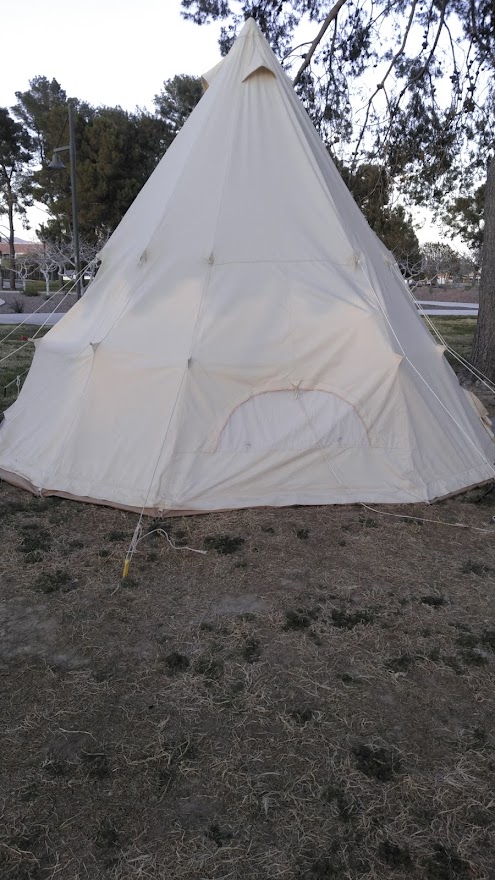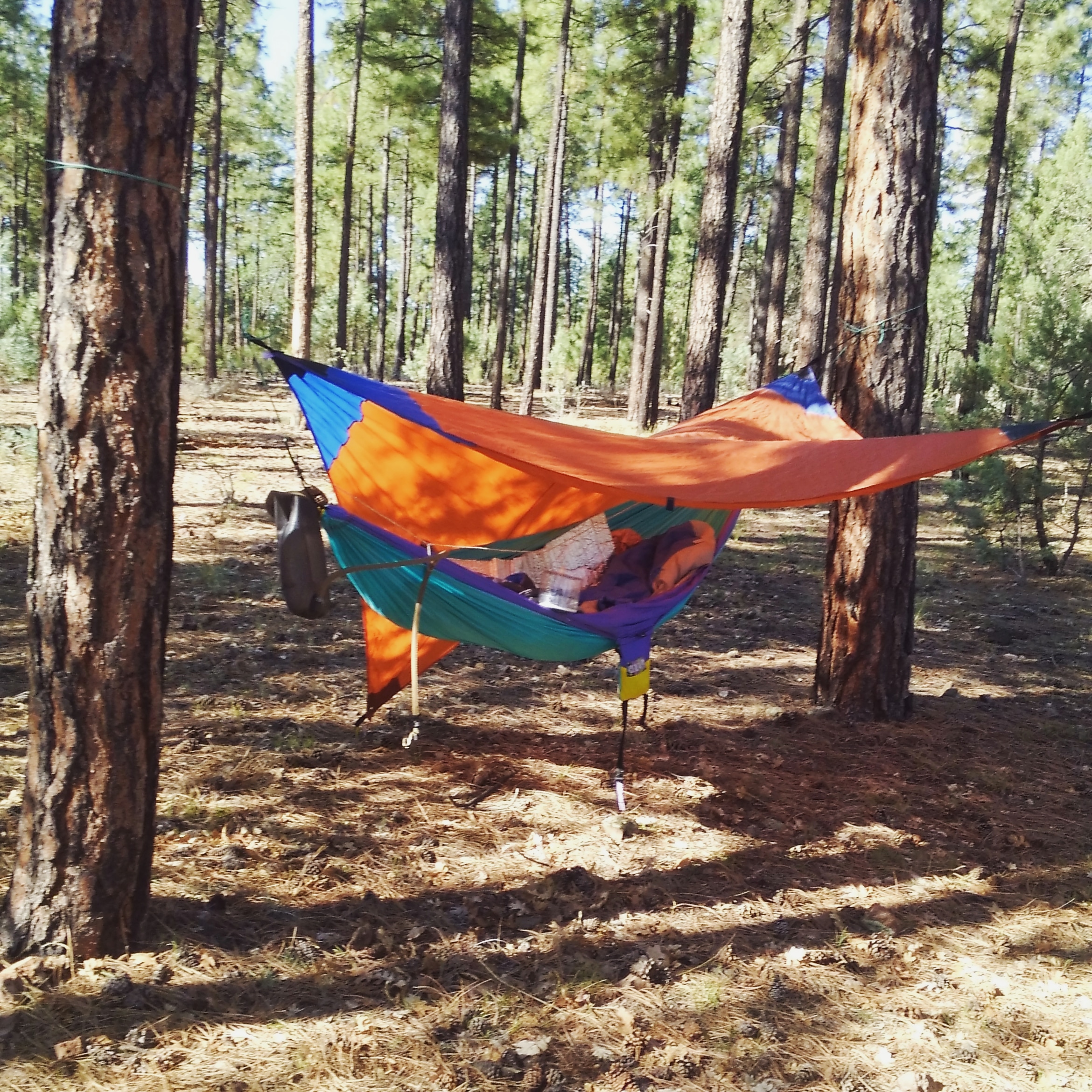
In my personal blog, [What Have We Learned?] I have intermittently chronicled our acquisition of the Danchel 6m Bell tent. [Here, then here]This was in error. We have no such tent.

In our defense, when we acquired this thing, it had no documentation, and no poles. Just the tent fabric and a storage bag. And it was already several years old.
What we have turns out to be a Danchel 5.5m Teepee tent. We learned this setting up at a Renaissance festival (as we do) and our neighbor recognized the contraption.
A review of said teepee. If only I had found this sooner…
Danchel does not seem to sell this style anymore, certainly not in the US market. They may be available in Asia, as “Indian tents”, which could refer to the type of canvas used rather than the style. These were old websites, though.
It is not actually a teepee in the sense of the traditional native American tents. Those would have several poles spread out along a circle and then brought together at the top to form the iconic cone shape. [Notes from the Frontier has a good write-up].
My tent has a single pole in the middle. It’s the second one I bought for it, and it’s still too short, being specific to the Danchel Bell tent. I don’t believe I could reliably purchase the proper pole, nor do I want to sink any more money in this, so I adapted.


Before I learned that the pole was simply too short, I went around in many circles trying to conjure a method of removing the droop from the sides.
None of them worked.



Because the pole was too short.
The answer is actually easy – both sets of loops can make to a guy stake that I try to place about three feet out. I have found that in good weather, I only need to make the top row.
This revelation also explained why I could never find the loops and holes for the doorway frame that is a feature of Bell tents. Yes – I bought one of those as well. The teepee has no holes or loops for the A-frame it does not need.
So I have an A-frame for a 6m Danchel Bell tent in my garage, and if you need it contact me. It’s yours for cost of shipping.
I also still have those stupid wooden stakes, but I will find a use for them.
Like their bell tent, the Danchel teepee features a zippered-in heavy-duty bathtub floor. Currently, all of that zip hardware still works. The floor can be completely removed if you want.
In the Bell tents, it is possible to hike up the walls a couple of feet to provide a more ventilated shade structure. The teepee does not have those means, though it could likely be done by just roiling up the side sections and clipping them.
We haven’t tried. At fair, it is both dressing room and sleeping quarters.
It comes with a flap for your stove vent, but we have sewn over that burn-damaged flap. We do not camp in the snow.
Now that we’re done with what not to do, here are some best practices I can recommend.
You really, really have to dry this thing – somehow – before storage. You do not want to store it wet for any longer than it takes to drive to someplace sunny and open.
I use the 12” heavy duty tent stakes, the ones that look like giant nails. Anything less will frustrate you when you are trying to convert the dirt parking lot of a rodeo ground into a renaissance market. I can usually get them in and out with a straight claw hammer, but I carry both a 8lbg sledge and a 3’ crowbar, and have used both on occasion.
It is also well to have something bright to wrap around your guy stakes, as they are trip hazards even in the sober daylight. I use a pair of bright orange ratchet straps. I also use a ratchet strap instead of a guy line for the loop over the doorway. This is a hangover from when I tried to incorporate an A-frame, but it is also more stumble resistant.
Here’s the video I did not put on You-Tube about inserting the pole.
I use an 8” wooden apple-box to prop up the bottom of the pole. It is the stand where the water bottle and toilet paper (two things you should always have in a sleeping tent) always return to.
The last time I kept track it went up in 90 minutes and went down in 50. Yes – I got it back into the bag – dry.














 e ground, leaving enough of an angle to get in and out of the hammock.
e ground, leaving enough of an angle to get in and out of the hammock.